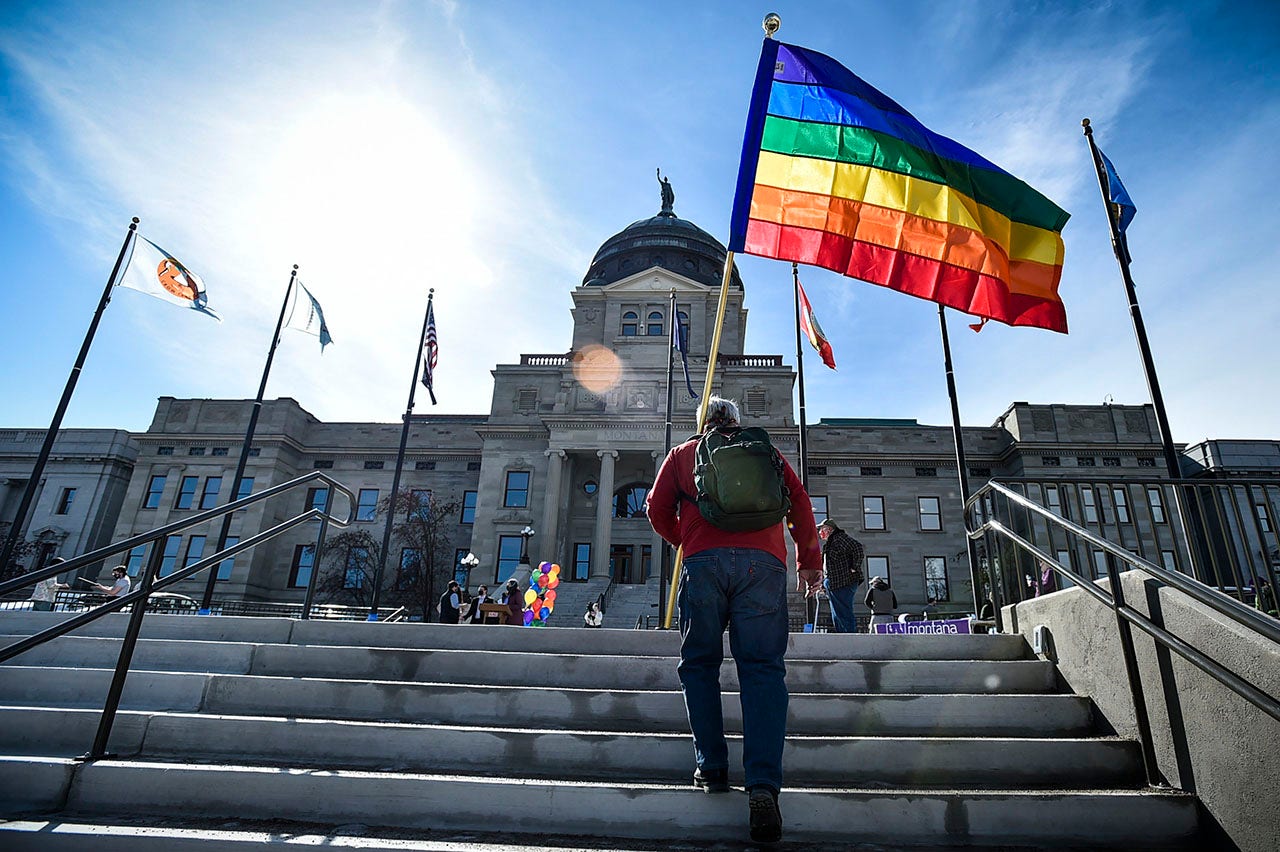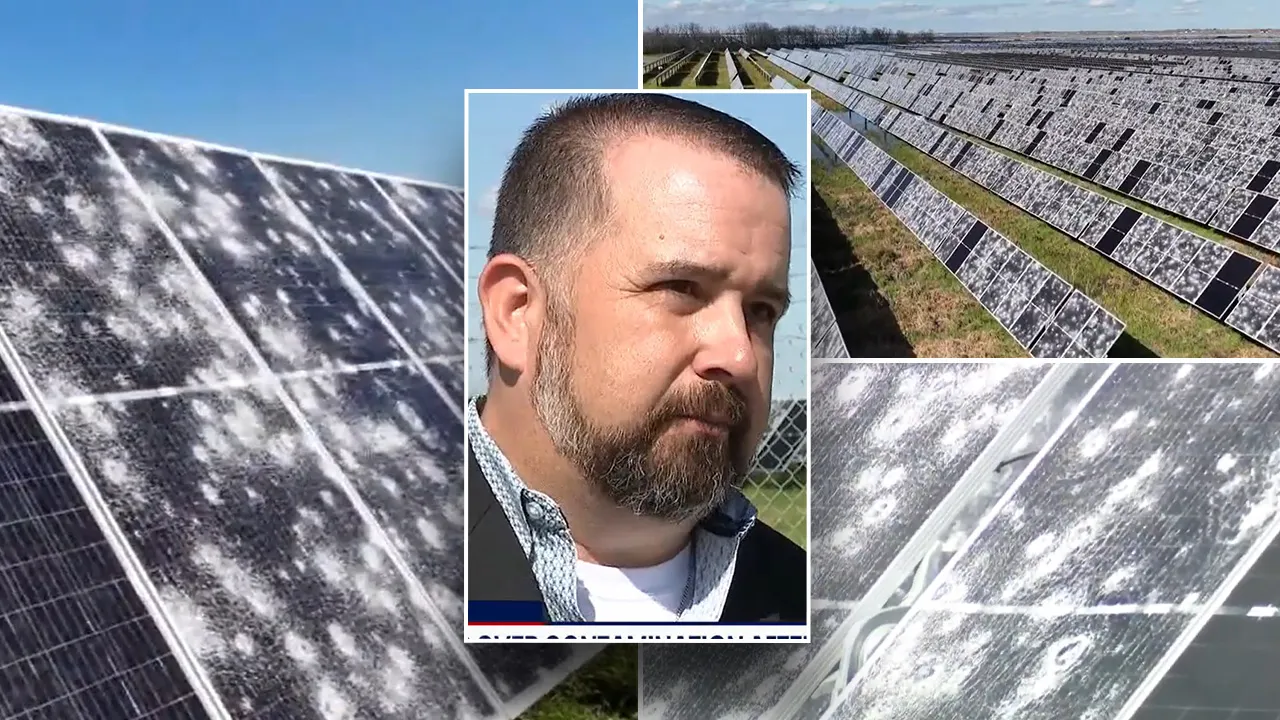Bates College is purported to a highly regarded institute of higher education. This story seriously refutes that regard. If I was paying $82K a year for my kid to attend this place, I would have yanked him immediately. What's next, getting disciplined for using an "index finger" gun and saying "Bang"???
“The whole situation started during the football season,” Seneca Moore ’27 said. “Obviously, it wasn’t a good season, so there wasn’t a lot of fun being had.”
It was the night of Oct. 14 and some members of the football team decided to do a prank war to lift team spirit after a disappointing season. Earlier that day Moore went to Walmart with a few friends on the team and purchased a couple of Nerf guns with gelfire ammunition for the night’s activities.
He was in the backseat of a car driving down Campus Ave with two of his friends when they spotted two of their teammates on the sidewalk.
“We slowed down next to them and one of them actually had the Nerf gun as well. So they started shooting at the car,” Moore recalls. “And then another one of them for some reason had a bat, he was just carrying around a bat for whatever reason. And so we slowed down and he parked and I just shot at them two or three times. And then we drove back to the dorm. We didn’t speed off or anything.”
Initially, only his two friends who were sitting in the front seats of the car received emails from Jimmy Riley, Director of Residence Life & Community Standards, informing them of their violations.
“They got an email from Jimmy saying that they might have violated Code of Conduct for having a weapon on campus and for reckless driving and disorderly conduct,” Moore said. “And those two people, just to keep in mind, one of them is Black and the other one is Hispanic, people of color.”
Moore, who is also Black, told his friends that he would try to help them and that they could share his name to vouch on their behalf.
“Nobody on the football team was standing up for them in any way. I know how that feels,” Moore said. “So I wanted to be the person to stand up for them. And that’s the whole reason why I’m involved in this.”
After he told his friends that, Moore received an identical email from Riley saying that he had also violated the Code of Conduct for possession or use of a weapon, dangerous vehicle use and disorderly conduct.
Moore says that he is not aware of any action being taken against the football players on the sidewalk, both of whom are white.
“They were also shooting back and one of them was carrying a bat, an actual weapon, and they didn’t get an email from Jimmy [Riley] that they broke Code of Conduct,” Moore said. “The whole football team was doing the same stuff and they didn’t get [an email]. It was just the three people of color.”
In late October, Moore was offered the option to sign a Voluntary Resolution by Agreement which, according to Moore, would put him on probation for four years and he would have the Code of Conduct violations on his school record. This would also mean he would be required to report his Code of Conduct Violations if he tried to transfer colleges.
However, Moore rejected this offer and opted to go through with a Student Conduct Committee (SCC) hearing to determine whether he violated the Code of Conduct for possession of a weapon, reckless driving and disorderly conduct. What he sees as a night of harmless pranks and lighthearted games, the school alleged was a more serious offense that could have resulted in academic probation and a permanent Code of Conduct violation on his record, suspension or even dismissal from the school.
“I don’t just want to be okay with it because I feel like this whole situation was blown out of proportion. And it’s four years of probation, it’s not just one. So my whole time here I’m gonna be walking on eggshells not knowing when I’m gonna mess up because I didn’t even know I would get in trouble for that,” Moore said. “How would I know when the next time I’m gonna get in trouble?”
On Tuesday, March 12, Moore appeared before the SCC for his hearing and came away with a clean record and no probation.
“I’m still healing, but it’s good to be done with that,” Moore said. “I still feel pretty negative given that this shouldn’t have happened in the first place and because of trauma that was re-triggered during the process.”
According to Moore, the committee unanimously voted to lift all of the violations and the probation.
“A lot of the committee members apologized at the end because of how absurd the situation was,” Moore said.
Overall, he still has mixed feelings about being at Bates.
“I feel a bit of relief after because now I don’t have to walk around with a hat on my head saying criminal,” Moore said. He added that he was grateful for the support he received from Professor of Dance Brian Evans, Associate Dean and Director of the Office of Intercultural Education Tonya Bailey-Curry and the Head Track & Field Coach Curtis Johnson.
In an email to The Student, Professor Evans praises Moore for his resiliency throughout this five month process.
“Let me preface my statement by stating that I am bound by a confidentiality policy regarding the hearing and a genuine fear of reprisal and retaliation,” Professor Evans said. “So what I will say is, I am honored to have been Seneca’s advisor through this process. His willingness to remain present throughout these past five months is a testament to his character and those who helped him become who he is and will continue to be.”
However, in reflection about the entire disciplinary process he emphasizes that, “The existing process, as I experienced it, was extremely harmful to be a part of and beyond challenging to navigate,” Professor Evans said. “I am glad the outcome affirmed what was true five months ago, and I hope the takeaway is not that this proves the process works but rather clear evidence that it failed Seneca and that we as a community failed to protect our most vulnerable.”
He adds that he will continue to support anyone working to change systems to be more equitable. “As the late Civil Rights Leader and former congressman John Lewis said, ‘Speak up, speak out, get in the way, get in good trouble, necessary trouble[…],’” Professor Evans said. “I stand committed to working with anyone to continue getting in that ‘Good Trouble’ to improve our systems so they align with our stated mission and vision for our community.”
Bailey-Curry echoes many of Professor Evan’s comments adding that, “Student support, in my opinion, is an unwavering process. While it varies because every individual is different and therefore the support can look different, it is something a student should know they can rely on, particularly when challenges arise.”
Had Moore opted to sign the Voluntary Resolution he would be under a four year probation and have the three Code of Conduct on his school record.
“As of right now the two other kids are not free of charges, but it might change,” Moore said, referring to the two other players in the car with him on Oct. 14.
According to one of the players who still has charges, he now plans to challenge his Code of Conduct Violations and his probation. “I do plan to take action against the school now, but I am hoping I shouldn’t have to and that the school comes clean to me, however as of now nothing has changed for my own outcome,” he said. At this time the student prefers to remain anonymous for privacy.
Claims Made by Campus Safety Against Moore
The specific policy the school alleged Moore violated by using a Nerf gun states: “Weapons prohibited on Campus include, but are not limited to firearms, ammunition, BB – pellet or air guns, knives, and slingshots.”
Prior to the hearing, the school was saying that a Nerf gun may fall under the category of a pellet gun, but Moore disagrees with this characterization.
“It says ‘Nerf’ on the side of it,” Moore says. “So you’re trying to say a toy, something that’s made for kids, is a weapon?”
Nerf-brand packaging says the products are for users 14 years and older and “impact from rounds may cause temporary marks on skin.” The only other warning on the box is that it may be a choking hazard for children less than three years old and a reminder to use the provided eyeware.
Moore also disputes many of the claims made by Campus Safety in their report to the college. The biggest discrepancy is that the school claimed he participated in not one, but two nights of activity involving Nerf guns.
The first night, Oct. 14 at 11:36 p.m. Campus Safety Officer James McQueeney was dispatched for a report of a car driving down to Frye and College St. “The car was reported as possibly being a Volkswagen Hatchback that was playing loud music and would slow down and shoot an Orbeez gel gun or similar type toy gun,” according to a Campus Safety report obtained by The Student.
Neither McQueeney nor Campus Safety Supervisor Sean Bilodeau saw the vehicle, so McQueeney “took up a position on the corner of College and Frye in the hope that the vehicle would come back around, and [he] could get a license plate and/or description of the people in the car.”
“I was on the corner for about a half-hour and did not see the vehicle return,” McQueeney wrote.
Moore says that he remembers specifically that he and his friends were in an Audi and that they weren’t playing music at the time. Additionally, the Nerf gun he said they were using is different from the “Orbeez gel gun” that the Campus Safety report referred to, which is automatic and shoots faster.
The next night at 8:35 p.m., Campus Safety Officer Elly King claims to have seen “three male students wearing all black and black masks” run behind her “coming from the John Bertram parking lot.” She alleges that one of the students “was carrying what appeared to be an Orbeez gun” and that the three of them jumped into an Audi yelling “go, go, go” and then “sped away down Central Ave.”
When she and Officer Warren Barter went to look for the car in the campus parking lots, they discovered the Audi in the Village parking lot “a few spaces down” from a Volkswagen “that fit the description of a vehicle from the night before who had been seen shooting Orbeez out of the window while driving through campus.” The report alleges that the Volkswagen had an Orbeez gun in the backseat.
According to the Campus Safety report, officers identified one of the students by the license plate of his car, and used a combination of security camera images and ID scan logs to identify the second. A security camera image taken at the same time shows three people outside the dorm, one of them carrying a nerf gun.
Nowhere in the reports does Campus Safety identify Moore. It wasn’t until Moore offered to advocate for his friends that he received a Code of Conduct violation email. However, he maintains that he wasn’t involved in the second night of activities.
He adds, “I don’t even own a ski mask.”
When asked to respond, the college stated, “The college does not comment on the outcome of Student Conduct hearings, which are the last element of a process involving a possible violation of the Student Conduct Code. All students have an opportunity to resolve issues around their conduct through a voluntary resolution process. Students who decline that process proceed through the Student Conduct Committee process to a hearing.”
To Moore, this entire situation has been confusing and disappointing.
“It has been an extremely hurtful process. Since [October], having to think about this day in and day out is exhausting and has weighed tremendously on my mental health. I have had to start taking medication to help me get by in the day and do things that should be easy for me to do,” Moore said.
He adds that he never thought this would happen when he applied. “Bates is my dream school. I go here, I’m gonna get whatever job I want. But my first semester here, they’re trying to give me a record for a toy gun,” Moore said.
BREAKING NEWS | Student Wins Conduct Hearing after Facing Four Years of Probation for use of a Nerf Gun
“The whole situation started during the football season,” Seneca Moore ’27 said. “Obviously, it wasn’t a good season, so there wasn’t a lot of fun being had.”
It was the night of Oct. 14 and some members of the football team decided to do a prank war to lift team spirit after a disappointing season. Earlier that day Moore went to Walmart with a few friends on the team and purchased a couple of Nerf guns with gelfire ammunition for the night’s activities.
He was in the backseat of a car driving down Campus Ave with two of his friends when they spotted two of their teammates on the sidewalk.
“We slowed down next to them and one of them actually had the Nerf gun as well. So they started shooting at the car,” Moore recalls. “And then another one of them for some reason had a bat, he was just carrying around a bat for whatever reason. And so we slowed down and he parked and I just shot at them two or three times. And then we drove back to the dorm. We didn’t speed off or anything.”
Initially, only his two friends who were sitting in the front seats of the car received emails from Jimmy Riley, Director of Residence Life & Community Standards, informing them of their violations.
“They got an email from Jimmy saying that they might have violated Code of Conduct for having a weapon on campus and for reckless driving and disorderly conduct,” Moore said. “And those two people, just to keep in mind, one of them is Black and the other one is Hispanic, people of color.”
Moore, who is also Black, told his friends that he would try to help them and that they could share his name to vouch on their behalf.
“Nobody on the football team was standing up for them in any way. I know how that feels,” Moore said. “So I wanted to be the person to stand up for them. And that’s the whole reason why I’m involved in this.”
After he told his friends that, Moore received an identical email from Riley saying that he had also violated the Code of Conduct for possession or use of a weapon, dangerous vehicle use and disorderly conduct.
Moore says that he is not aware of any action being taken against the football players on the sidewalk, both of whom are white.
“They were also shooting back and one of them was carrying a bat, an actual weapon, and they didn’t get an email from Jimmy [Riley] that they broke Code of Conduct,” Moore said. “The whole football team was doing the same stuff and they didn’t get [an email]. It was just the three people of color.”
In late October, Moore was offered the option to sign a Voluntary Resolution by Agreement which, according to Moore, would put him on probation for four years and he would have the Code of Conduct violations on his school record. This would also mean he would be required to report his Code of Conduct Violations if he tried to transfer colleges.
However, Moore rejected this offer and opted to go through with a Student Conduct Committee (SCC) hearing to determine whether he violated the Code of Conduct for possession of a weapon, reckless driving and disorderly conduct. What he sees as a night of harmless pranks and lighthearted games, the school alleged was a more serious offense that could have resulted in academic probation and a permanent Code of Conduct violation on his record, suspension or even dismissal from the school.
“I don’t just want to be okay with it because I feel like this whole situation was blown out of proportion. And it’s four years of probation, it’s not just one. So my whole time here I’m gonna be walking on eggshells not knowing when I’m gonna mess up because I didn’t even know I would get in trouble for that,” Moore said. “How would I know when the next time I’m gonna get in trouble?”
On Tuesday, March 12, Moore appeared before the SCC for his hearing and came away with a clean record and no probation.
“I’m still healing, but it’s good to be done with that,” Moore said. “I still feel pretty negative given that this shouldn’t have happened in the first place and because of trauma that was re-triggered during the process.”
According to Moore, the committee unanimously voted to lift all of the violations and the probation.
“A lot of the committee members apologized at the end because of how absurd the situation was,” Moore said.
Overall, he still has mixed feelings about being at Bates.
“I feel a bit of relief after because now I don’t have to walk around with a hat on my head saying criminal,” Moore said. He added that he was grateful for the support he received from Professor of Dance Brian Evans, Associate Dean and Director of the Office of Intercultural Education Tonya Bailey-Curry and the Head Track & Field Coach Curtis Johnson.
In an email to The Student, Professor Evans praises Moore for his resiliency throughout this five month process.
“Let me preface my statement by stating that I am bound by a confidentiality policy regarding the hearing and a genuine fear of reprisal and retaliation,” Professor Evans said. “So what I will say is, I am honored to have been Seneca’s advisor through this process. His willingness to remain present throughout these past five months is a testament to his character and those who helped him become who he is and will continue to be.”
However, in reflection about the entire disciplinary process he emphasizes that, “The existing process, as I experienced it, was extremely harmful to be a part of and beyond challenging to navigate,” Professor Evans said. “I am glad the outcome affirmed what was true five months ago, and I hope the takeaway is not that this proves the process works but rather clear evidence that it failed Seneca and that we as a community failed to protect our most vulnerable.”
He adds that he will continue to support anyone working to change systems to be more equitable. “As the late Civil Rights Leader and former congressman John Lewis said, ‘Speak up, speak out, get in the way, get in good trouble, necessary trouble[…],’” Professor Evans said. “I stand committed to working with anyone to continue getting in that ‘Good Trouble’ to improve our systems so they align with our stated mission and vision for our community.”
Bailey-Curry echoes many of Professor Evan’s comments adding that, “Student support, in my opinion, is an unwavering process. While it varies because every individual is different and therefore the support can look different, it is something a student should know they can rely on, particularly when challenges arise.”
Had Moore opted to sign the Voluntary Resolution he would be under a four year probation and have the three Code of Conduct on his school record.
“As of right now the two other kids are not free of charges, but it might change,” Moore said, referring to the two other players in the car with him on Oct. 14.
According to one of the players who still has charges, he now plans to challenge his Code of Conduct Violations and his probation. “I do plan to take action against the school now, but I am hoping I shouldn’t have to and that the school comes clean to me, however as of now nothing has changed for my own outcome,” he said. At this time the student prefers to remain anonymous for privacy.
Claims Made by Campus Safety Against Moore
The specific policy the school alleged Moore violated by using a Nerf gun states: “Weapons prohibited on Campus include, but are not limited to firearms, ammunition, BB – pellet or air guns, knives, and slingshots.”
Prior to the hearing, the school was saying that a Nerf gun may fall under the category of a pellet gun, but Moore disagrees with this characterization.
“It says ‘Nerf’ on the side of it,” Moore says. “So you’re trying to say a toy, something that’s made for kids, is a weapon?”
Nerf-brand packaging says the products are for users 14 years and older and “impact from rounds may cause temporary marks on skin.” The only other warning on the box is that it may be a choking hazard for children less than three years old and a reminder to use the provided eyeware.
Moore also disputes many of the claims made by Campus Safety in their report to the college. The biggest discrepancy is that the school claimed he participated in not one, but two nights of activity involving Nerf guns.
The first night, Oct. 14 at 11:36 p.m. Campus Safety Officer James McQueeney was dispatched for a report of a car driving down to Frye and College St. “The car was reported as possibly being a Volkswagen Hatchback that was playing loud music and would slow down and shoot an Orbeez gel gun or similar type toy gun,” according to a Campus Safety report obtained by The Student.
Neither McQueeney nor Campus Safety Supervisor Sean Bilodeau saw the vehicle, so McQueeney “took up a position on the corner of College and Frye in the hope that the vehicle would come back around, and [he] could get a license plate and/or description of the people in the car.”
“I was on the corner for about a half-hour and did not see the vehicle return,” McQueeney wrote.
Moore says that he remembers specifically that he and his friends were in an Audi and that they weren’t playing music at the time. Additionally, the Nerf gun he said they were using is different from the “Orbeez gel gun” that the Campus Safety report referred to, which is automatic and shoots faster.
The next night at 8:35 p.m., Campus Safety Officer Elly King claims to have seen “three male students wearing all black and black masks” run behind her “coming from the John Bertram parking lot.” She alleges that one of the students “was carrying what appeared to be an Orbeez gun” and that the three of them jumped into an Audi yelling “go, go, go” and then “sped away down Central Ave.”
When she and Officer Warren Barter went to look for the car in the campus parking lots, they discovered the Audi in the Village parking lot “a few spaces down” from a Volkswagen “that fit the description of a vehicle from the night before who had been seen shooting Orbeez out of the window while driving through campus.” The report alleges that the Volkswagen had an Orbeez gun in the backseat.
According to the Campus Safety report, officers identified one of the students by the license plate of his car, and used a combination of security camera images and ID scan logs to identify the second. A security camera image taken at the same time shows three people outside the dorm, one of them carrying a nerf gun.
Nowhere in the reports does Campus Safety identify Moore. It wasn’t until Moore offered to advocate for his friends that he received a Code of Conduct violation email. However, he maintains that he wasn’t involved in the second night of activities.
He adds, “I don’t even own a ski mask.”
When asked to respond, the college stated, “The college does not comment on the outcome of Student Conduct hearings, which are the last element of a process involving a possible violation of the Student Conduct Code. All students have an opportunity to resolve issues around their conduct through a voluntary resolution process. Students who decline that process proceed through the Student Conduct Committee process to a hearing.”
To Moore, this entire situation has been confusing and disappointing.
“It has been an extremely hurtful process. Since [October], having to think about this day in and day out is exhausting and has weighed tremendously on my mental health. I have had to start taking medication to help me get by in the day and do things that should be easy for me to do,” Moore said.
He adds that he never thought this would happen when he applied. “Bates is my dream school. I go here, I’m gonna get whatever job I want. But my first semester here, they’re trying to give me a record for a toy gun,” Moore said.









